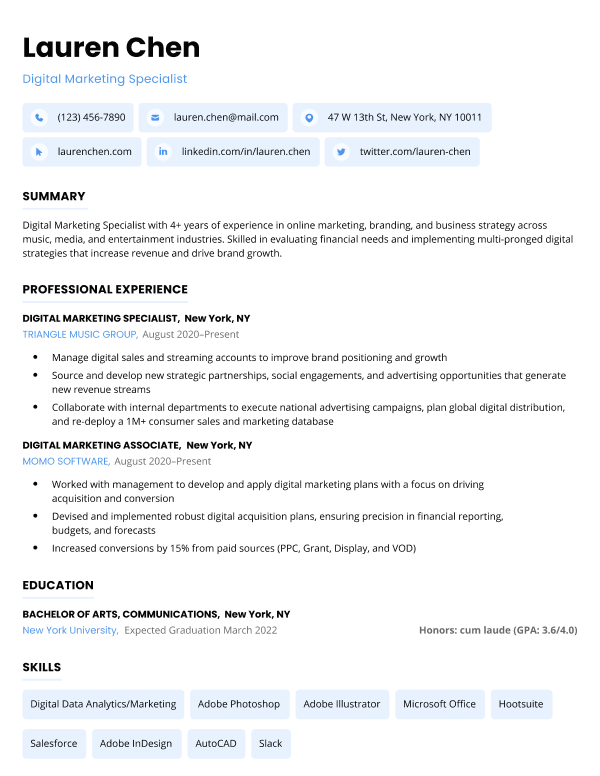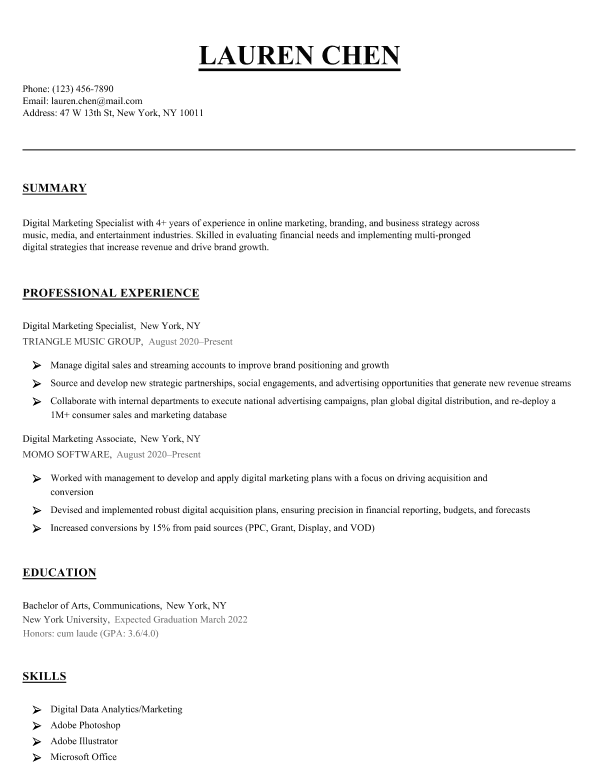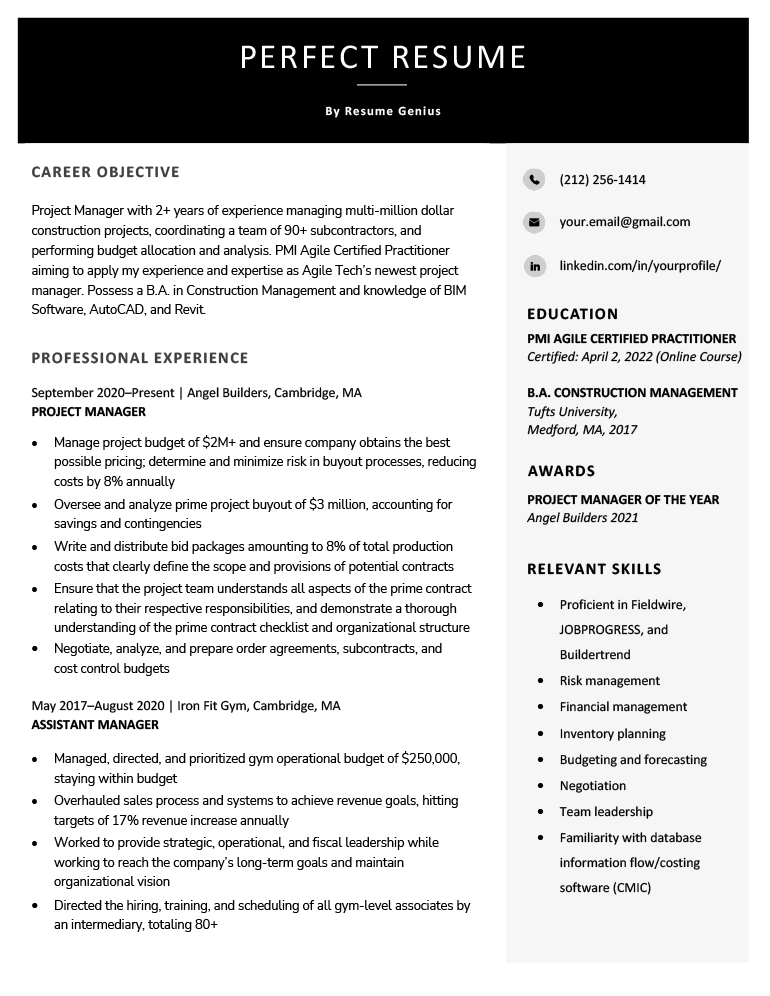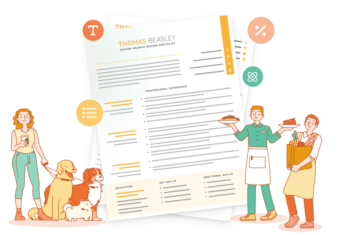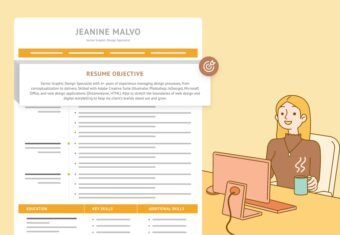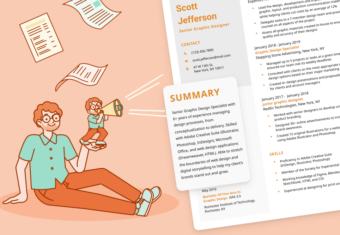Making the best resume for every application should be every job seeker’s aim. But how do you actually write the perfect resume?
Our free-to-use resume builder can make you a resume in as little as 5 minutes. Just pick the template you want, and our software will format everything for you.
To find out, we asked a professional career and resume expert what the ideal resume looks like. According to him, this is the perfect resume:
Perfect resume example
What makes this resume perfect
According to our expert, this resume is perfect because it:
- Opens with a detailed, convincing resume objective
- Includes information that shows employers they’re the right person for the job
- Uses a simple, formal design that helps the applicant look professional
- Includes plenty of data with specific timeframes
- Clearly highlights the candidate’s relevant technical skills
Ultimately, this resume does everything possible to show employers that the candidate is highly qualified and professional.
How to make your own perfect resume
Here are six steps to create your own perfect resume:
1. Tailor your resume to the target position
A resume isn’t a one-size-fits-all document. Submitting the same resume to multiple employers hurts your chances of getting interviewed because a general resume won’t highlight the exact skills hiring managers are looking for.
Instead, show employers that you’re the perfect person for the job by tailoring your resume to the job description.
Each time you apply for a new position, you should:
- include skills-based resume keywords from the job description throughout your resume
- research the company and customize your resume to match its needs and company culture
- place your most job-relevant qualifications in a resume objective that states how you can add value to the company
The difference between a good resume and a perfect resume is often just the level of effort you put in. If you want to come across as the ideal candidate, you need to take the time to tailor your resume.
2. Use a clean, professional design
Ultimately, when employers look at your resume they’re interested in your work experience and skills – everything else is secondary.
So to make the perfect resume, you want to use a design that’s aesthetically pleasing, but not too flashy. You never want your resume design to end up distracting from your qualifications.
A perfect resume has clean fonts and design features that highlight your most important qualifications.
Additionally, you should choose a template that’s appropriate for your industry:
- Applying for jobs in a formal industry like medicine or law? Use a simple design with neutral colors.
- Targeting for jobs in a creative industry like marketing? Show your creative side by using brighter colors and modern design details.
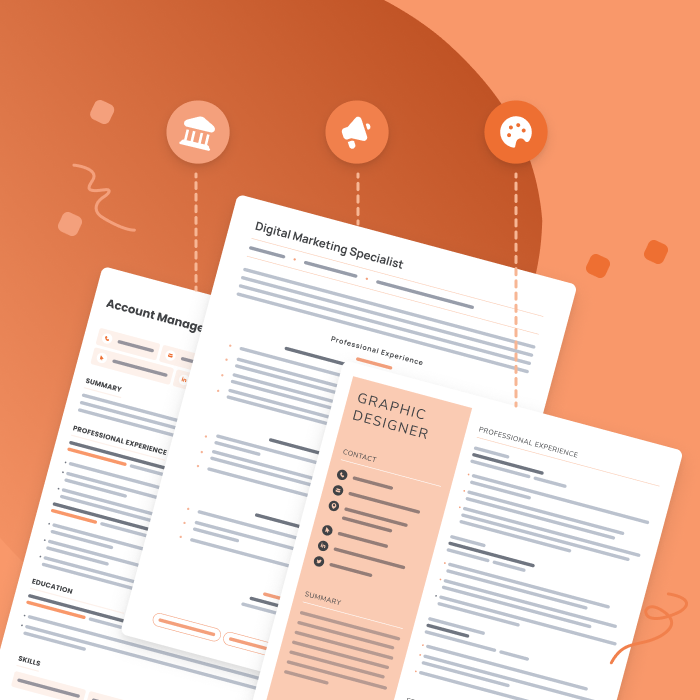
Resume examples for different industries
Not sure what your resume should look like? The best way to learn is by taking inspiration from resume examples written by other candidates in your industry.
3. Keep your resume’s wording concise
The ideal resume length is one page, so cut any unnecessary words to make your resume easy for the hiring manager to skim. For example, keep your work experience bullet points to one or two lines of text.
Another great way to reduce the length and wordiness of your resume is to remove unnecessary adjectives, modifiers, and prepositional phrases. See how the following excerpt from a resume summary can be edited to reduce wordiness and still communicate the same message:
Bad
Highly driven, I am motivated at work by the fact that I can empower my patients to overcome their daily challenges and live more connected, fulfilling lives.
Good
Highly motivated by empowering my patients to overcome challenges and live more fulfilling lives.
Opting for more concise and direct writing in your resume has the additional benefit of making you sound more confident to potential employers.
If your industry requires you to write a CV, or you have over 10 years of relevant experience, your perfect resume may end up being two or more pages long.
4. Highlight your career achievements with hard numbers
To write the perfect resume, quantify your achievements with examples that include numbers. Tying your successes to actual data gives hiring managers a better idea of your ability to do the work.
Plus, including numbers is much more impressive than simply listing job responsibilities for each work experience bullet point because they back up your contributions with a success metric.
Here are examples of quantifiable data that could increase the impact of your resume’s accomplishments:
- Amount of resources saved
- Percentage of profits increased
- Number of direct reports supervised
- Customer satisfaction rates
- Times recognized for achievements
5. Triple-check your resume to ensure it’s error-free
If your resume has the smallest typo — an extra space after a period, for example — it gives the impression that you didn’t put enough thought or effort into your application.
Here’s how to make sure your resume is perfectly clean and free of errors:
- Read through your resume slowly (even out loud) to make sure you’re not overlooking any typos or unnecessary words
- Use an editing tool like Grammarly (but use logic to double-check suggestions!)
- Step away from your computer for a while, then come back and read it again with fresh eyes
- Check for parallel structure in lists
- Ask a friend to check it for you
Frequently asked questions about making a perfect resume
Here are answers to three frequently asked questions about making the perfect resume:
What is the perfect resume format?
The perfect resume format for most job seekers is a chronological resume, because it makes relevant experience and accomplishments the main focus of your application. Hiring managers and employers are usually most interested in your experience and professional background, and this format is best equipped to showcase these details.
With the chronological format established as the most commonly used type of resume, it’s the easiest structure for hiring managers to understand at a glance.
For some job seekers, especially those making a career change, other formats like combination resumes or functional resumes could be more suitable.
Why is having a perfect resume important?
Having a perfect resume is important because it helps you present your qualifications in a way that’s easy to understand, and it shows employers that you’re highly motivated to work with them.
In some cases a good resume is enough, but companies with desirable openings often receive dozens if not hundreds of applications from qualified candidates. Writing a perfect resume ensures you stand out amongst these candidates and increases your chances of getting interviewed.
How should I print off my perfect resume?
Print off your perfect resume using professional resume paper. You should ensure your word processor is set to print out your resume in US Letter size if you’re in the US.
It’s a good idea to print off a practice example in black and white before printing out in color (because color ink is pricier) so you can check that your resume layout is perfect.
Click to rate this article
4.9 Average rating



